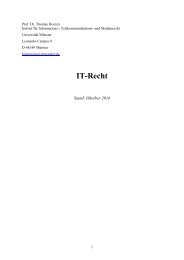3d4yVkKMl
3d4yVkKMl
3d4yVkKMl
Create successful ePaper yourself
Turn your PDF publications into a flip-book with our unique Google optimized e-Paper software.
- 46 -<br />
146. Taking into account the Parties’ arguments and the evidence presented, the Court will<br />
begin by comparing the JARPA II sample sizes to the sample sizes set in JARPA. It will then<br />
describe how sample sizes were determined in the JARPA II Research Plan and present the Parties’<br />
views on the sample sizes set for each of the three species. Finally, the Court will compare the<br />
target sample sizes set in the JARPA II Research Plan with the actual take of each species during<br />
the programme. Each of these aspects of the sample sizes selected for JARPA II was the subject of<br />
extensive argument by Australia, to which Japan responded in turn.<br />
(i) A comparison of JARPA II sample sizes to JARPA sample sizes<br />
147. The question whether the lethal sampling of whales under JARPA was “for purposes of<br />
scientific research” under Article VIII, paragraph 1, of the Convention is not before the Court. The<br />
Court draws no legal conclusions about any aspect of JARPA, including the sample sizes used in<br />
that programme. However, the Court notes that Japan has drawn comparisons between JARPA and<br />
JARPA II in addressing the latter programme and, in particular, the sample sizes that were chosen<br />
for JARPA II.<br />
148. As noted above (see paragraph 104), JARPA originally proposed an annual sample size<br />
of 825 minke whales per season. This was reduced to 300 at JARPA’s launch, and after a number<br />
of years was increased to 400 (plus or minus 10 per cent). Thus, the JARPA II sample size for<br />
minke whales of 850 (plus or minus 10 per cent) is approximately double the minke whale sample<br />
size for the last years of JARPA. As also noted above (see paragraph 110), JARPA II also sets<br />
sample sizes for two additional species fin and humpback whales that were not the target of<br />
lethal sampling under JARPA.<br />
149. To explain the larger minke whale sample size and the addition of sample sizes for fin<br />
and humpback whales in JARPA II generally, Japan stresses that the programme’s research<br />
objectives are “different and more sophisticated” than those of JARPA. Japan also asserts that the<br />
emergence of “a growing concern about climate change, including global warming, necessitated<br />
research whaling of a different kind from JARPA”. In particular, Japan argues that “JARPA was<br />
focused on a one-time estimation of different biological parameters for minke whales, but<br />
JARPA II is a much more ambitious programme which tries to model competition among whale<br />
species and to detect changes in various biological parameters and the ecosystem”. It is on this<br />
basis, Japan asserts, that the “new objectives” of JARPA II “notably ecosystem research”<br />
dictate the larger sample size for minke whales and the addition of sample size targets for fin and<br />
humpback whales.<br />
150. Given Japan’s emphasis on the new JARPA II objectives particularly ecosystem<br />
research and constructing a model of multi-species competition to explain the larger JARPA II<br />
sample size for minke whales and the addition of two new species, the comparison between JARPA<br />
and JARPA II deserves close attention.



